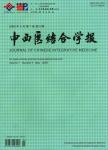Complementary and alternative medicine use in Iranian patients with diabetes mellitus
Complementary and alternative medicine use in Iranian patients with diabetes mellitus作者机构:Noncommunicable Diseases Research Center Fasa University of Medical Sciences Department of Traditional Medicine School of Medicine Fasa University of Medical Sciences Research Center for Traditional Medicine and History of Medicine Department of Traditional Persian Medicine School of Medicine Shiraz University of Medical Sciences Essence of Parsiyan Wisdom Institute Traditional Medicine and Medicinal Plant Incubator Shiraz University of Medical Sciences Health Policy Research Center Shiraz University of Medical Sciences Endocrine and Metabolism Research Center Nemazee Hospital Shiraz University of Medical Sciences
出 版 物:《Journal of Integrative Medicine》 (结合医学学报(英文版))
年 卷 期:2015年第13卷第5期
页 面:319-325页
核心收录:
学科分类:1002[医学-临床医学] 100201[医学-内科学(含:心血管病、血液病、呼吸系病、消化系病、内分泌与代谢病、肾病、风湿病、传染病)] 10[医学]
主 题:diabetes mellitus complementary therapies prevalence medicine, herbal Iran.
摘 要:OBJECTIVE: There is increasing interest in complementary and alternative medicine generally, and especially by those affected by chronic diseases, such as diabetes mellitus. We aimed to determine the prevalence and pattern of complementary and altemative medicine use among patients suffering from diabetes mellitus in Shiraz, southern Iran. Another objective was to explore associated factors for use of complementary and alternative medicine among patients with diabetes mellitus. METHODS: A 19-item semi-structured questionnaire (open- and close-ended) was administered to 239 patients with diabetes mellitus in this cross-sectional study. It was carried out in two outpatient diabetes clinics affiliated with the Shiraz University of Medical Sciences, Shiraz, Iran. RESULTS: One hundred and eighty patients (75.3%) used at least one type of complementary and alternative medicine in the last year prior to the interview. Patients with diabetes mellitus who were living in a large family (〉 5 members), not taking insulin, and believed that complementary and alternative medicine have synergistic effects with conventional medicine, were independently and significantly (P values: 0.02, 0.04, and 0.01, respectively) more likely to use complementary and alternative medicine. Most of the users (97.7%) reported use of herbal preparations, and 89.4% of users did not change their medication, neither in medication schedule nor its dosage. CONCLUSION: The use of complementary and alternative medicine, especially herbal remedies, is popular among diabetes patients in Shiraz, Iran. This use is associated with patients' family size, type of conventional medications and their view about concomitant use of complementary and conventional medicine.



